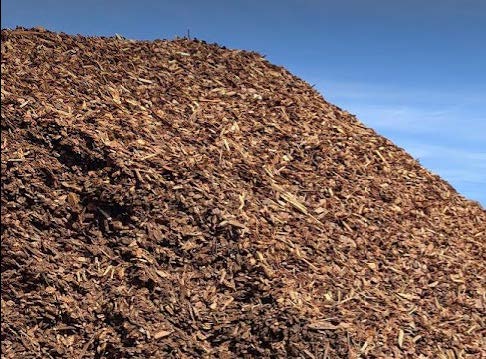Commercially Available Products to Increase Soil Water-Holding Capacity for Gardens and Landscapes
Introduction
The amount of water retained in a landscape is influenced by various factors, such as irrigation scheduling, existing slopes, and soil type. For instance, soil rich in clay may produce considerable runoff during an irrigation event, while soil dominated by sand may experience significant leaching. Given the water scarcity becoming more prevalent in Utah's semiarid climate, even small reductions in irrigation water usage can be highly beneficial.
In the Beehive State, we have soils ranging from clay-dominant soils to sand-dominant soils. Sandy soils are characterized by high sand content, resulting in a limited capacity to hold water. The soil's water-holding capacity refers to the amount of water that can be retained by the soil and used by plants. Larger sand and silt particles tend to be inefficient at holding water.
One of the most common and easy ways to increase soil water-holding capacity is incorporating organic matter into the soil. Adding organic matter provides absorptive surfaces and creates numerous micropores in the soil, aiding water retention. Adding just 1% organic matter to the soil can allow for an additional storage of 2,000 to 2,500 gallons of water in a 5,000 square foot garden, with the greatest benefits observed in sandy or coarse-textured soils. There is plenty of information on adding organic manure and compost, so we will exclude those from our discussion, but here are a few Utah State University (USU) Extension resources:
- Sustainable Manure and Compost Application: Garden and Micro Farm Guidelines
- Sustainable Manure and Compost Application: Manure Application Calculation Excel Workbook
Although adding organic matter is traditionally the most effective way to enhance soil water-holding capacity, several commercial products in the market also have the potential to increase soil water-holding capacity. In this fact sheet, we will discuss the properties and characteristics of those commercially available products and recommended application rates. We will also explore some limitations of using these products. Application rates for soil amendments also vary depending upon the type of soil, with coarse soil requiring more amendment compared to fine soil. However, as the composition of those manufactured products keeps changing, we recommend following the application rates listed on the product label, if available.
A. Unconventional Organic Matter Sources

1. Biochar
Biochar (Figure 1) is a type of charcoal produced by burning organic materials in the absence or limited supply of oxygen. While biochar can be produced from any organic material, it is commonly derived from plant materials. Biochar is touted as a solution to improve soil health, with claims of increasing soil nutrient and water-holding capacity, enhancing microbial activity, reducing soil salinity, and raising soil pH. However, biochar’s effectiveness in improving soil water-holding capacity is still debatable, with some studies yielding positive results, while others report no impact.
Additionally, using biochar can temporarily alter soil nutrients. It is important to understand that biochar can strongly adsorb nutrient ions; therefore, in low soil nutrient conditions, plants might be deprived of available nutrients. Biochar application rates vary, but a typical mix ratio recommendation is 1:15 (biochar: soil). Biochar particles, if not mixed well with soil, may blow up into the air, creating undesirable air quality. Each percentage increase in biochar could increase soil water-holding capacity by 1.7% until the biochar composition of the soil is around 10%. The use of biochar in field conditions has not yielded significant benefits in Utah, but it may produce negative effects on less fertile soils. Using biochar in soil with high pH and salinity (such as Utah soil) may not produce any tangible benefit in terms of water-saving but may reduce soil salinity to some extent as it can adsorb salt ions. Because biochar is already decomposed, it has a stable life of close to 20 years in soil. The following links provide more information on biochar.
- What Is Biochar?
- What Is Biochar and How Is It Used?
- Biochar Impacts on Crop Yield and Soil Water Availability
2. Woodchip

Figure 2. Woodchip
Woodchip mulching is a common practice to reduce evaporation and control weeds. However, amending or mixing woodchips in degraded soils to improve its quality is a rare practice. Woodchips (Figure 2) have the potential to retain water and release it slowly, which can help improve soil water-holding capacity. In fact, 1.0 gram of woodchip can retain about 0.5 gram of water and has a cation exchange capacity (CEC) of 30 to 100 meq/10 grams, which is slightly higher than that of clay loam soil. Cation exchange capacity is the capacity of soil to hold nutrients, which are available for plants use. When using woodchips to amend Figure 2. Woodchip Figure 1. Biochar 3 soil, it is important to use aged woodchips that are about 1 inch (2.54 cm) in diameter and do not have a sour smell. Fresh woodchips can lead to nitrogen immobilization compared to aged wood chips because microbes use carbon in woodchips and nitrogen from the soil to decompose woodchips. It is recommended to mix woodchips with the top 6 inches (15 cm) of soil at a rate of 5% by weight. According to a study comparing soil water retention with woodchips, incorporating woodchips into the top 7.9 inches (20 centimeters) of soil resulted in a 50% increase in soil water-holding capacity for the 5 years. The useful life of woodchips varies depending on the parent material, ranging from 5 to 12 years.
3. Peat Moss
Peat is a nonrenewable resource formed from the remains of submerged plants that decompose over hundreds of years, leaving behind lignified tissues that do not further decompose. Peat is commonly found in wetlands or peat bogs and is often harvested or derived from dead sphagnum moss plants, giving it the name "peat moss." Peat moss is a common soil amendment to improve water-holding capacity and can also lower soil pH in low alkaline soils. It can also loosen soil, preventing soil compaction. The high water-holding capacity of peat moss makes it a suitable amendment for soils dominated by sand. Peat moss can hold around 70% to 80% of water by weight. To incorporate peat moss into soil, use a volume-to-volume ratio of 1:5 to 1:8 (dry peat moss to soil) in the top 8 to 12inches (20-30 centimeters) of soil and irrigate well. It is important to ensure that the peat moss is thoroughly wet during the initial irrigation to maximize its water-holding capacity. Peat moss is already broken down, so it will not further decompose, making it a long-lasting amendment. Peat moss harvested from peat bogs is an important part of the ecosystem and supports unique biodiversity, stores carbon, and improves water quality; hence, overharvesting peat moss has negative environmental consequences.
4. Coconut Coir

Figure 3. Coconut Coir
Coconut coir (Figure 3) is a material derived from the outer covering of the coconut fruit (mesocarp), which was previously considered a waste product. Coconut coir is composed of cellulose and lignin and has become increasingly popular due to its physical characteristics, including high water-holding potential, fluffiness, slow degradation, slightly acidic pH, and sustainability in the production process. There are two types of coconut coir: coir chunks and coir dust, which vary in properties.
Coconut coir dust is finely ground coconut fiber, while coir chunks are mesocarp chunks. The pH of coconut coir is around 6. The water-holding capacity of coconut coir depends on coarseness, with finer particle sizes holding more water. Coconut coir dust with a particle size of less than 0.02 inch (0.5 millimeters) can hold more than 72% water by volume, while particle sizes of 0.08 inch (2 millimeters) can hold only 16%-20% by volume. One liter of coconut coir (volume) can hold anywhere from 150 to 800 milliliters of water, and one pound of coconut coir can hold from 3 to 6 pounds of water by weight due to its fluffiness. Coconut coir has a higher cation exchange capacity (CEC) than clay soil and is much higher (10x to 20x) compared to sandy soil. Also, the older the coconut coir, the better its water-holding capacity.
It is generally okay to use any type of coconut coir available on the market with particle sizes > 2 millimeters. Applying it to your landscape can improve soil physical, chemical, and biological properties while increasing water-holding capacity for years to come. Coconut coir usually comes dry, so before applying it to your landscape (soil), soak it well, which increases its volume by 5 to 6 times. After soaking, break it down to make it loose and fluffy and apply it on the top 6 to 8 inches (15-20 centimeters) of soil. Dig out the top 8 inches of soil and mix the wet coir and soil in the ratio of 1:6 to 1: 8. Soil with high sand content will require more coir. Finally, fill the mixed soil back in place. Amending sandy soils with coconut coir can help improve soil quality, water retention, and biological activity.
B. Superabsorbent Polymers
Superabsorbent polymers (SAPs) are materials (natural and synthetic) that can hold water, sometimes up to 1,000 times their weight, without causing permanent damage to their structure. However, adding too much SAPs can disrupt soil structure, which may negatively impact the root system. Superabsorbent polymer can last from 5 to 7 years, and the recommended application rates vary with the manufacturer, but it is typically around 1 pound per 100-300 square feet, or 0.05% to 2% on a weight basis. SAPs can be either natural or synthetic and may reduce irrigation frequency by absorbing and retaining water. When applied at the recommended rate, SAPs may increase soil moisture content by 10% to 15% on sandy soil. Even a small amount of SAPs on degraded soil may improve soil quality and increase microbial population. SAPs can cause a slight reduction in soil pH due to the presence of carboxylate ions, but that is unlikely to happen in highly alkaline Utah soils. In a few studies, the application of SAPs showed improved plant growth during limited irrigation; however, other research showed no effect or even negative effect of SAP application. Therefore, using SAPs is still up for discussion and research.
1. Natural SAPs
SAPs derived from natural polymers like cellulose, starch, and chitosan are advantageous due to their degradability. However, they have a disadvantage of low water absorption capacity, necessitating their usage in larger quantities. Table 1 provides details on different SAPs and their corresponding water retention capacities.
Table 1. Water-Holding Capacities of Natural Superabsorbent Polymers (SAPs)
| Natural SAPs | Approximate water-holding capacity of pure form (by weight basis) | Approximate water-holding capacity of the modified form (by weight basis) |
|---|---|---|
| Cellullose | 30 times | 200 times |
| Starch | 10 times | 145 times |
| Chitosan | 8 times | 500 times |
2. Synthetic SAPs
Typically, synthetic SAPs consist of a blend of two or more water-absorbing substances. A widely available SAP in the market is created by combining acrylic acid and acrylamide and is sold under different trade names. This SAP has the ability to retain 100 times its weight in water.
Polyacrylic acid (PAA) and sodium polyacrylate (PNaA) are the most commonly used water retention agents due to their exceptional water-absorption capacity, with the ability to hold 300 to 500 times water on a weight basis.
Cross-linked polyacrylamide (PAM) is another synthetic SAP that is frequently used and can retain water 300 to 400 times its weight, though it is slightly less effective than PAA and PNaA due to its limited physical stability in the presence of soil salinity. It is important to note that only cross-linked PAM products are absorbent. Most PAM on the market is not cross-linked and is used as an erosion prevention, soil stabilizer, or in water treatment as a sediment flocculant. Hydrogel is another prevalent synthetic SAP that can hold water up to 600 to 800 times its weight when created with acrylic acid.
SAPs made from synthetic polymers such as polyacrylic acid (PAA) and polyacrylamide (PAM) are cost-effective, long-lasting, and have a high-water absorption rate.
Polyvinyl alcohol (PVA) is another synthetic SAP with a high-water retention capacity. When mixed with cellulose, it can hold more than 100 times its weight in water.
C. Wetting Agents/Surfactants
Wetting agents are chemical compounds that bond with water to reduce surface tension, thereby reducing soil hydrophobicity. Wetting agents usually contain a mix of polarized organic compounds with positive and negative charges. Wetting agents are also called “surfactants,” which stands for SURFace ACTive AgeNTS. There are four types of surfactants based on their physical and chemical properties, as follows.
- Nonionic surfactants: These kinds of surfactants do not have an electrical charge and have lower wetting capacity compared to ionic surfactants. They are also more sensitive to fluctuations in temperature and are higher in cost.
- Cationic surfactants: These surfactants have a positive charge in their head as a functional group.
- Anionic surfactants: These surfactants have a negative charge in their head as a functional group.
- Amphoteric surfactants: This type of surfactant has the characteristics of both cationic and anionic surfactants and can act as either an anionic or cationic surfactant.
Any surfactant, when applied at the recommended concentration, may increase water infiltration in soil. Surfactants are found both in granular and liquid form. Liquid surfactants can be mixed with irrigation water, and granular can be directly applied to the soil. Remember to irrigate immediately after applying granular surfactants.
D. Mycorrhizae Inoculation
Mycorrhizae are a type of fungi that form a mutually beneficial relationship (symbiosis) with plant roots. These fungi filaments extend the root system, effectively increasing the root surface area by 100 to 600 times. This results in better absorption of nutrients and water by the plant. In addition, mycorrhizae produce enzymes that help dissolve nutrients and form soil aggregates, which in turn increases soil water-holding capacity. These associations have also been shown to reduce the impact of drought stress in water-limited conditions. However, mycorrhizal symbiosis is very host specific and broad-spectrum inoculants may not result in desirable results.
Mycorrhizae inoculants are typically sold as powders and need to come into direct contact with the plant root or seed when applied. There are different methods for inoculating plants with mycorrhizae, such as mixing the powder with seeds before sowing, dipping cuttings or roots before planting, or applying a granule or powder to the root zone. You can also make a mycorrhizae mixture and drench the root zone of plants.
The rate of mycorrhizae application can vary, depending on the specific product and the type of soil it will be applied to. It is important to follow the manufacturer's instructions on the product label for the recommended application rate. In general, the recommended rate for mycorrhizal inoculant is usually around 1-2 tablespoons per plant, or 1-2 pounds per 100 square feet of soil. However, it is best to check the label or contact the manufacturer for specific instructions on how to apply their product. Overapplying mycorrhizae is generally not harmful to plants, but it may not provide additional benefits beyond the recommended rate. Mycorrhizae application is particularly beneficial in phosphorus-deficient soils. For more information on mycorrhizae application rates and benefits, websites such as Mycorrhizal Applications can provide detailed information.
References
-
Artiola, J. F., & Wardell, L. (2017). Guide to making and using biochar for gardens in Southern Arizona [Fact sheet]. University of Arizona Cooperative Extension.
-
Cates, A. (2020). The connection between soil organic matter and soil water. UNL Water. Accessed February 22, 2023, from https://water.unl.edu/article/animal-manure-management/connection-between-soil-organic-matter-and-soil-water.
-
Chang, L., Xu, L., Liu, Y, & Qiu, D. (2021). Superabsorbent polymers used for agricultural water retention. Polymer Testing, 94, 107021.
-
Gould, M. C. (2015). Compost increases the water holding capacity of droughty soils [Fact sheet]. Michigan State University Extension. https://www.canr.msu.edu/news/compost_increases_the_water_holding_capacity_of_droughty_soils.
-
Karhu, K., Mattila, T., Bergström, I., & Regina, K. (2011). Biochar addition to agricultural soil increased CH4 uptake and water holding capacity – Results from a short-term pilot field study. Agriculture, Ecosystems & Environment, 140(1-2), 309–313. doi: https://doi.org/10.1016/j.agee.2010.12.005.
-
Landry, R. (2012). The response of bermudagrasses [Cynodon dactylon (L.) Pers. X C. Transvaalensis Burtt-Davy] and creeping bentgrass [Agrostis stoloniferi (L.)] to a commercial humectant and wetting agents during summer [Master’s thesis, Clemson University]. All Theses. 1455. https://tigerprints.clemson.edu/all_theses/1455
-
Li, Z., Schneider, R. L., Morreale, S. J., Xie, Y., Li, J., Li, C., & Ni, X. (2019). Using woody organic matter amendments to increase water availability and jump‐start soil restoration of decertified grassland soils of Ningxia, China. Land Degradation & Development, 30(11), 1313–1324. doi: https://doi.org/10.1002/ldr.3315.
-
Minnesota Stormwater Manual. (2023). Coir and applications of coir in stormwater management. Minnesota Pollution Control Agency. https://stormwater.pca.state.mn.us/index.php?title=Coir_and_applications_of_coir_in_stormwater_management
-
Ostrand, M. S., DeSutter, T. M., Daigh, A. L. M., Limb, R. F., & Steele, D. D. (2020). Superabsorbent polymer characteristics, properties, and applications. Agrosystems, Geosciences & Environment, 3(1). doi: https://doi.org/10.1002/agg2.20074.
-
Xiong, X., & Anderson, S. H. (2020). Wetting agents: Differences and implications for best use. GCMOnline.com. Accessed February 23, 2023, from www.gcmonline.com. https://www.gcmonline.com/course/environment/news/wetting-agent-differences
-
Yu, O.-Y., Raichle, B., & Sink, S. (2013). Impact of biochar on the water holding capacity of loamy sand soil. International Journal of Energy and Environmental Engineering, 4(1), 44. doi: https://doi.org/10.1186/2251-6832-4-44.
Published February 2024
Utah State University Extension
Peer-reviewed fact sheet
Authors
Shital Poudyal, Jake Powell, Rowe Zwahlen, and edited by Grant Cardon


 Utah 4-H & Youth
Utah 4-H & Youth


